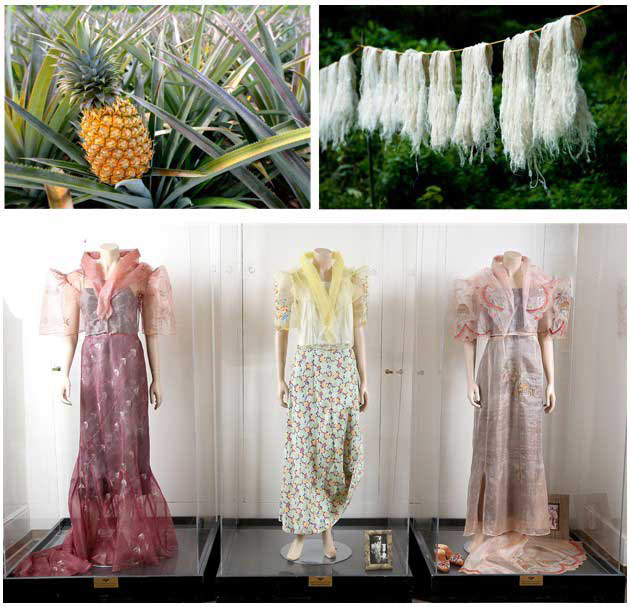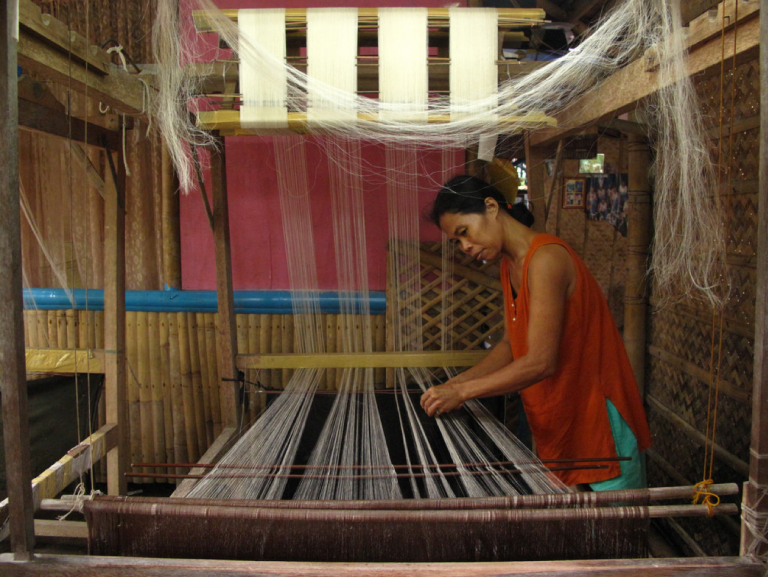Piña


☼ Piña’s name means pineapple. The fabric is made from Native Philippine Red pineapple which takes 18 months to reach maturity. These pineapple plants grow spiny leaves up to two meters in length.
☼ After about a year from planting, the leaves are cut from the plant and the process of creating piña fabric begins
☼ Traditional weavers of piña cloth had nature oriented designs like flowers, fruits, coconut trees
☼ It takes 8 hours to finish one meter of plain weave cloth
☼ Used in upscale traditional designs like the Barong Tagalog.
Abaca or Manila Hemp
☼ Abacá is a species of banana native to the Philippines. Also known as Manila Hemp, the leaf fibers of the plant was traditionally used to make rope.
☼ Abacá is used by many tribes to make native clothing like the t’nalak made by the Tiboli people, and dagmay, made by the Bagobo
☼ The harvesting process involves separating the primary and secondary sheaths, stripping the fibers, and sun drying until they are pale and lustrous
These tribal dances feature
natural themes and materials...
Binanog Dance of the Panay Bukidon
☼ The Binanog dance mimics the flight of the Philippine hawk
Banga or Pot Dance of the Kalinga
☼ The banga is a round jar made of clay, used for fetching water. These heavy earthen pots are made from local.
Kalinga women place a coiled piece named a jikon made from a straw plant named ligis, or a rolled cloth on their heads while carrying the banga
These women carry seven or eight pots at a time, as they trudge to the beat of gangsa, or the wind chimes
Kalinga women place a coiled piece named a jikon made from a straw plant named ligis, or a rolled cloth on their heads while carrying the banga
These women carry seven or eight pots at a time, as they trudge to the beat of gangsa, or the wind chimes



